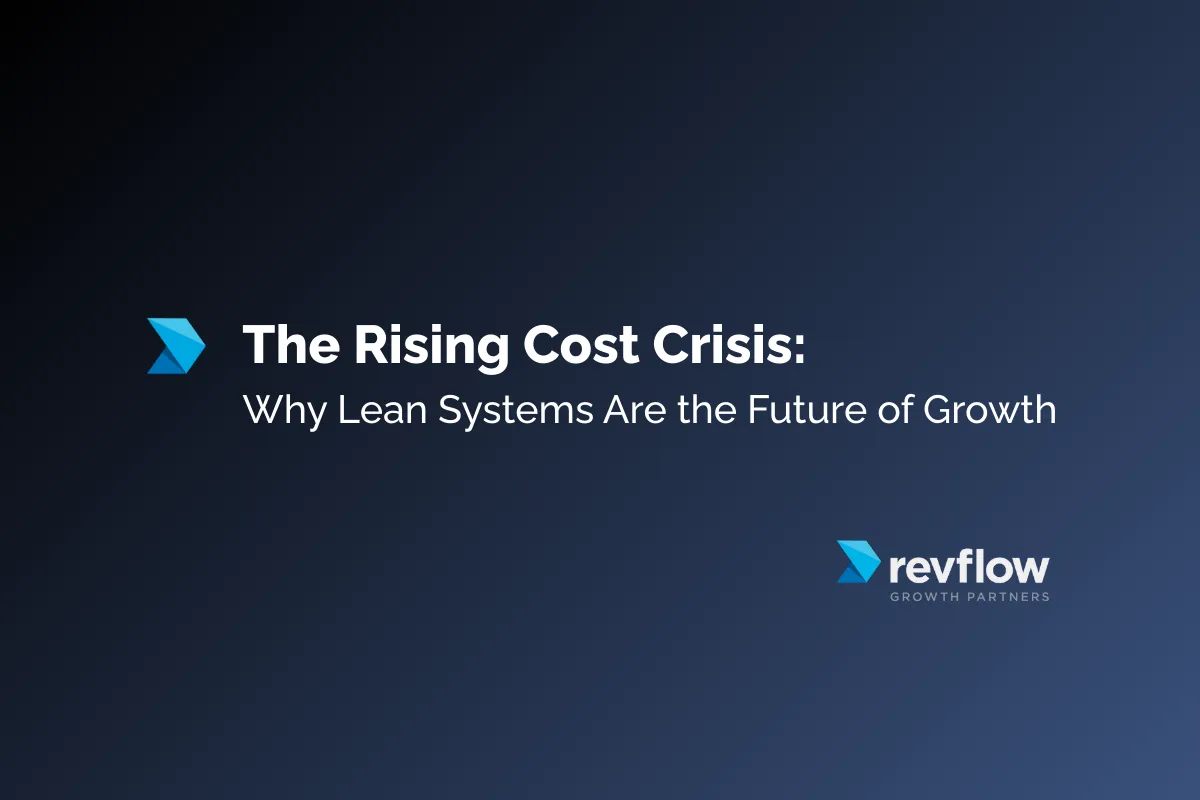
Growth Systems for Businesses in 2025

“All we are doing is looking at the timeline… and removing the non-value-added wastes.”
-Taiichi Ohno, Toyota - Father of the Toyota Production System
Last week, I sat in a room with a dozen business leaders. Different industries. Different sizes. The conversation was identical: expenses are rising, labor costs keep climbing, and the pressure to grow without adding endless headcount has never been greater.
This isn’t isolated — it’s what I’m seeing in boardrooms and client calls everywhere. Businesses aren’t just worried about hitting sales numbers; they’re worried about survival in an environment where every inefficiency gets magnified.
The good news? The solution isn’t more hiring or blind cuts. It’s building lean revenue systems that eliminate waste and unlock growth.
The Cost Squeeze Is Real
Inflation has raised the price of everything. Talent is harder to find and more expensive to keep. Leaders are stuck between two pressures:
Customers expect faster, cheaper, higher-quality service.
Payroll and expenses keep eroding margin.
The old playbook — “just add people” — no longer works. Every hire increases complexity, training needs, and long-term liability.
The question is no longer “How fast can we hire?” but “How efficient can we become?”
What Lean Revenue Systems Look Like
Here are five high-impact areas:
Automated Lead Management — Eliminate wasted hours chasing cold leads; focus only on high-value conversations.
Revenue Dashboards — Surface live data on margins, pipeline, and conversion rates; adjust in real time.
Smart Workflow Automations — Cut repetitive tasks that kill margins.
Client Experience Systems — Streamline onboarding, billing, and support to reduce churn.
Scalable Communication — Prevent miscommunication, one of the costliest inefficiencies.
Why It Matters Now
The margin for error has evaporated:
Overstaffed? Payroll crushes profit.
Understaffed? Client experience suffers.
Inefficient? Competitors pass you by.
Lean leaders will scale sustainably — even in a high-cost economy.
A Real-World Example
One client spent hours each week building manual reports. We built them a live dashboard pulling data directly from their stack. Overnight, they saved 15+ hours weekly, spotted pipeline inefficiencies, and gained clarity on true margins.
The ROI: more revenue, fewer errors, better decisions. Multiply that across dozens of processes, and the financial impact is massive.
Where to Start
Identify Waste — Map workflows; spot duplication and errors.
Prioritize Revenue Impact — Fix sales, marketing, onboarding, billing first.
Automate Intelligently — Remove manual steps; free people for higher-value work.
Measure & Iterate — Build dashboards; optimize with data.
The Bottom Line
Every wasted step eliminated is profit returned. Every error removed is margin saved.
The companies that thrive in the next decade won’t scale headcount — they’ll scale systems.
To give you a practical starting point, I put together a free guide:

